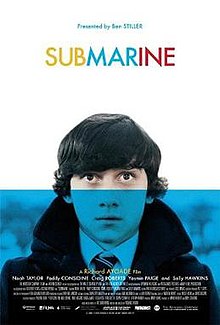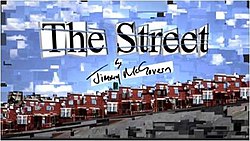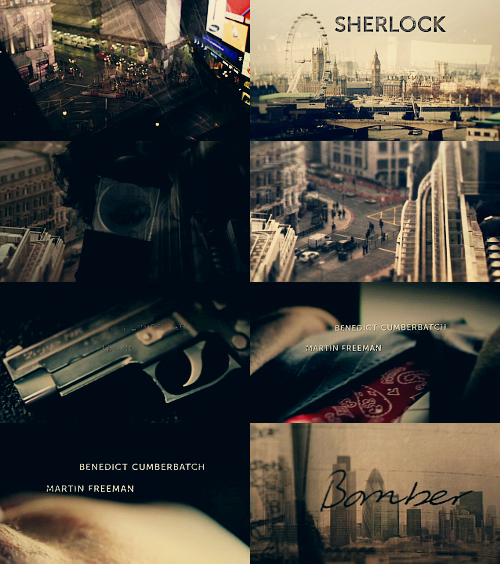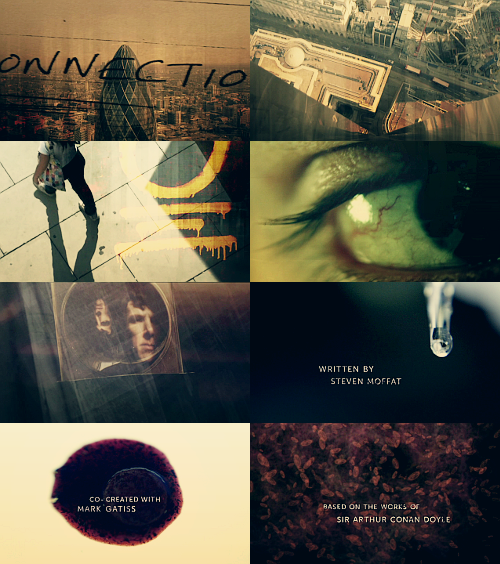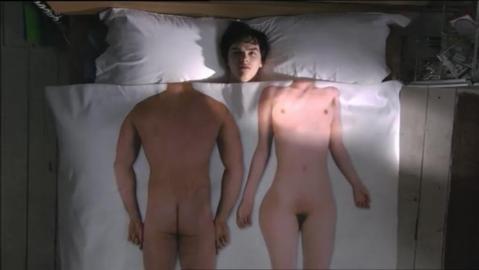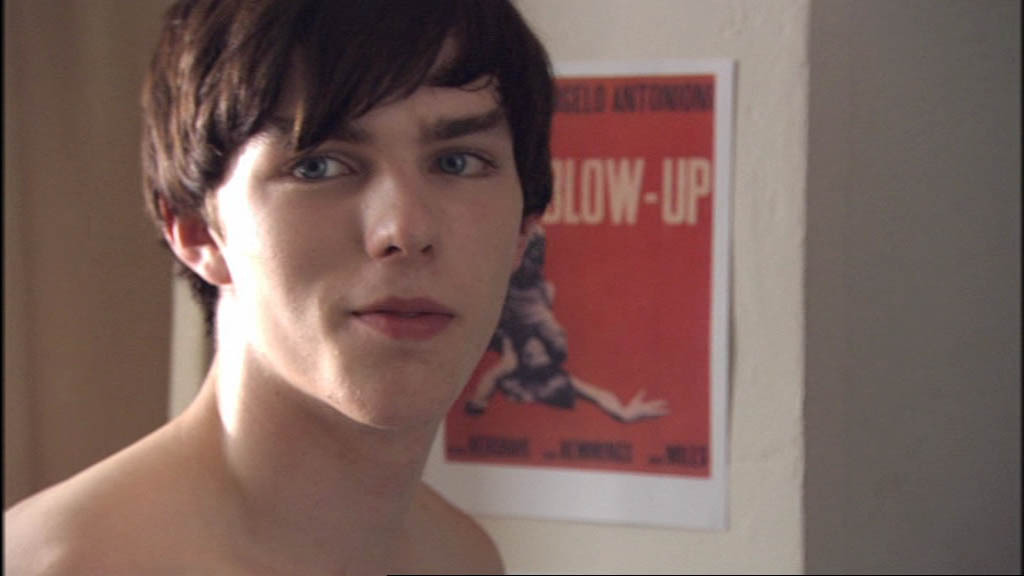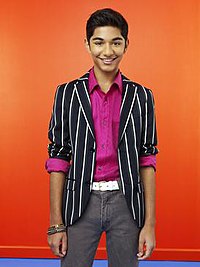Disability in this clip both adheres to the stereotype of disabled people not being able to do anything for them selves, and also contradicts it. Throughout the clip Mise en Scene allows us to see the man in the wheelchair is different due to his disability and stands out against other "normal" people.
As he is in the wheelchair, this shows his physical disability, and shows he isn't as capable as most other men. He also looks out of place in the shop alongside his brother, as he is wearing scruffy clothes and the shop is jolly with lots of colour inside. This makes the viewer think disabled people do not fit into regular lives and natural scenes. His clothes make us think he isn't too bothered about his appearance, he wants practical clothes that are comfortable to make his life easier. Also, when he is talking to the shop assistant, we see her facial expression through the use of a mid shot, and this allows us the see the way "normal" people react to someone with a disability. This also reinforces the stereotype that people without a disability never know how to react or what to say, for fear of offending them. However, the woman in this clip reacts in a negative way, showing the audience how not to behave.
When he goes to the bathroom we see he is used to this surrounding as the colour palette matches his clothes, showing us he is more comfortable in smaller places with people he knows, such as his brother. The whole scene of allowing him to go to the toilet highlights the struggles of living with a disability as he has to get his brother to help him due to the fact his hands are "too numb". This adheres to the stereotype that people with a disability struggle in life and aren't capable of doing things for themselves, they need someone to help them with the simplest of things.
Eli, another character with a disability within the clip appears normal as he does not have a physical disability. The way he dresses and walks around shows he is capable of doing his own thing, and when we first meet him it is not made clear he has a disability, showing us that you can't judge people the first time you meet them, like many people do to people in wheelchairs. We do however, see him clutching his arm later on in the clip as he hurt it due to his disability. This highlights his vulnerability and pain whilst he is trying to live an ordinary life.
Camera Angles are used in the clip to show the differences between characters due to their disabilities. The master shot of the clip shows a mirror reflection, in which the man in the wheelchair is smaller and in the background, whereas his brother is larger and in the foreground. This highlights the way people tend to look through or over people in wheelchairs, as the stereotype views them as insignificant or not as powerful as the able bodied.
Slightly higher angled shots are used when looking at the man in the wheelchair, due to the fact he is lower down and on a lower level than the rest of the people in the scene. A mid, two shot is used to show the differences between him and his brother as we can see by looking at them, they are not similar in appearance, due to the disability.
When the brothers are in the cafe, a birds eye shot is used to view the coffee's they ordered. This then highlights the differences in the coffee's as we can see they have different patterns on. This has connotations of the differences between the brothers, and shows us that the differences effect their entire lives. It also relates to the stereotype of disabled needing to be treated differently because of their condition, however, sometimes they just want to be treated like everyone else.
When we first see Eli fall to the ground, the camera spins and follows him, to show disorientation and to confuse the audience, which then shocks them because of what has happened. A high angled shot is also used to show his vulnerability whilst lying on the ground as he can't do anything to help himself or his condition. As the group of girls walk away, they steal some tinsel and this shows how little people care about people with disabilities; which both conforms and contradicts the stereotype of how people act around someone with a disability. A long shot is used to show his insignificance whilst lying on the road and how he is alone and abandoned.
The editing throughout the clip is mainly continuity editing, to show dealing with disability is part of their everyday life and these are natural occurrences We follow the man in the wheelchair due to the camera panning and his actions are also central to the clip's story line. This shows that the disability is a big part of his life, as one of the main reasons we are focusing on him. This reflects the stereotype that people only see the disability, not the person they actually are inside.
When Eli is in the middle of the road, having collapsed, fast paced editing is used to show the emotion of several characters, as well as to shock the audience, as they may not be as used to scenes of this nature, like the characters are.
No jump cuts or technical editing is used in the clip, which could portray the simple lives the characters have to lead because of their disability, but it could also have been done to emphasize the characters cannot help being disabled, and they can't do anything about it.
Sound within the clip makes the viewers feel sorry for the man in the wheelchair, due to the fact he says things like "I have an incurable disease" as we see he can't do anything about his condition. We also see his frustration with his condition due to the fact he says "quit pushing me!" to his brother, as he wants to be able to do things for himself and try and be independent. His behavior conforms to views we have on disabled people, due to the fact we often see them wanting to do things on their own, but struggling to because of their disability.
Little non-diegetic sound is used in the clip to stress how real the situation is and that this clip focuses on his life. The music playing in the background of the scene in the shop and the scene in the coffee house (diegetic as the waitress tells her boss to turn it up) juxtaposes with the negative attitude and words of the man in the wheelchair, due to the fact the music is jolly and in the Christmas spirit. This shows that disabled people often have a negative look on life because of the situation they are in and how they feel about it.
"This disease is winning" is then followed by silence from his brother, probably because he doesn't know how to react or what to say to makes things better. Silence also creates tension within the scene, due to the fact there was no non-diegetic music to accompany the conversation. When Eli has collapsed we see the man in the wheelchair helps by phoning the ambulance, and this contradicts the stereotype that disabled people are useless. He also tells a bystander to fetch some blankets or coats to keep Eli warm, which shows he is smart and knows what to do in situations like these.
When Eli falls we also hear a shout from the concerned waitress who is also friends with him. This contrasts with the past scenes in which Eli has fallen, due to the girls stealing his tinsel and the hooded bikers laughing at him. This shows that it is important for people with a disability to have people who love them around, as it creates a positive impact on their life.







